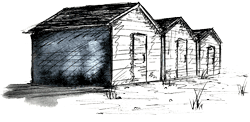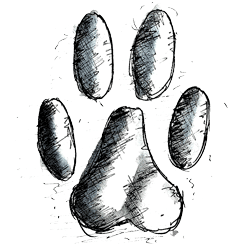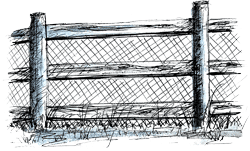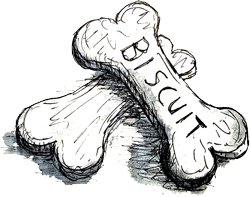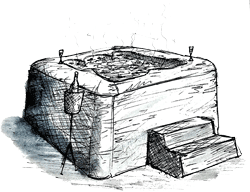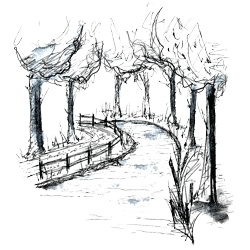
Woodfarm Barns Investigates – Suffolk’s myths and legends
Though it was as recent as 1974 that it was officially unified after the Local Government Act of 1972, our treasured and beautiful county of Suffolk dates back to Anglo-Saxon times. With such a long history, it’s hardly surprising that the county has more than a few interesting myths and legends associated with it. In acknowledgement of this fact, we decided to grab our deerstalker hats and investigate some of these mysteries.
Black Shuck

The definition of a ‘black shuck’ is a ghostly black dog. This ghostly black dog is said to roam the Suffolk coastline, occasionally venturing further inland towards the Fens of Cambridgeshire and Norfolk and Essex. The size of the dog varies depending on who you ask, with some claiming it’s as big as a horse whilst others maintain it’s slightly smaller and headless. It is said that you will hear a howl, however, you won’t hear footsteps – some say that it could be a bad omen. Perhaps the most famous accounts of the Black Shuck take place in Bungay and Blythburgh, both destinations which date back to 1577. In each case, it is a stormy night and churches that attracted the apparition of the Black Shuck. The residents of Bungay have warmly embraced their part in folklore history, affectionately dubbing their local football Club Bungay Town FC “The Black Dogs”. Any legend hunters out there will surely fall in love with the charm of Bungay, even if they don’t spot any horse-sized dogs who may or may not be headless!
The Wildman of Orford
Orford is situated on the Suffolk coast and during the 12 and 13th centuries it was a vital fishing spot. Legend has it that soon after the competition of a medieval castle in Orford, two fishermen were out at sea when they felt a heavy tug in their net. When they lifted the net out of the water, they noticed a large man covered in hair from head to toe who could not speak and was then sent to prison in the castle. Here he was punished harshly in a predictably medieval fashion. He was then put into the sea in an enclosed space that did not go all the way down to the bottom. It is said that on one fine day, he escaped his netted area of the sea and still returns to this day. The castle still stands in the village today, and is a key visitor attraction for the village, so well worth visiting whether or not you’re curious about sea ghouls!
Edmund the Martyr

Anyone local to Suffolk will know all about Bury St Edmunds – they may also know the history of the person who it is named after. Edmund was the King of East Anglia from 855 until 869. However, his death is the main focus of this legend. King Edmund was killed by Viking and Scandinavian invaders in 869 after he refused to denounce his faith – Catholicism. It was believed that he was killed in Hoxne, a place just north of Eye and to the east of Diss. The story goes that he was spotted by a newly-wedded couple who noticed the ornaments he was wearing whilst hiding from the Danes under a bridge. Once the Danes found him and he refused to denounce his faith, he was beaten, tied to an oak tree, had multiple arrows fired at him and then had his head chopped off and tossed into the woods. Followers soon found the body of Edmund, but not the head. The head in fact was found by a wolf, who was crying with the savaged head of King Edmund between his legs. It is said that when the head met the body, they fused together, with Bury St Edmunds becoming a pilgrim place for Edmund. Whilst there aren’t any recent sightings of the unfortunate King, the town of Bury St Edmunds is easily accessible from our Barns and Barges for rent in Suffolk and makes for a fantastic day out.
The Bures Dragon
If you are local to the Bures area, or you’re simply an enthusiast of any art that finds itself engraved into the grass, you may notice the dragon carved into the grass on the hill. Now, there is a story behind this mysterious dragon. In 1405, the story of the Bures Dragon was first recorded by a local monk. In 855, in the village of Bures, people from the village stated how they saw a massive beast with sharp teeth, a long tail and a feathered head. It is said that whilst terrorising the village, he was breathing fire killing local farm animals. People of the village did try killing the dragon, however, they failed, and he disappeared into the marshland. Curiously, accounts never mentioned the dragon again. However, parts of the story have been depicted onto walls of churches in the area, showing the dragon bringing destruction to the village. A particularly picturesque destination to visit when staying at one of our Barns for rent, we can safely recommend Bures and its safety from dragons.
Rendlesham Forest UFO incident

No article on myths in Suffolk would be complete without a mention of Rendlesham Forest. This is a subject we’ve previously explored in some detail, so be sure to head to the Woodfarm Barges blog to find out more!
Altogether, Suffolk abounds with myths and legends that contribute to its reputation as one of the most historic counties in England. To get a taste of this history for yourself, why not get in touch today to book a Barn or Barge for rent to find your perfect base point.

